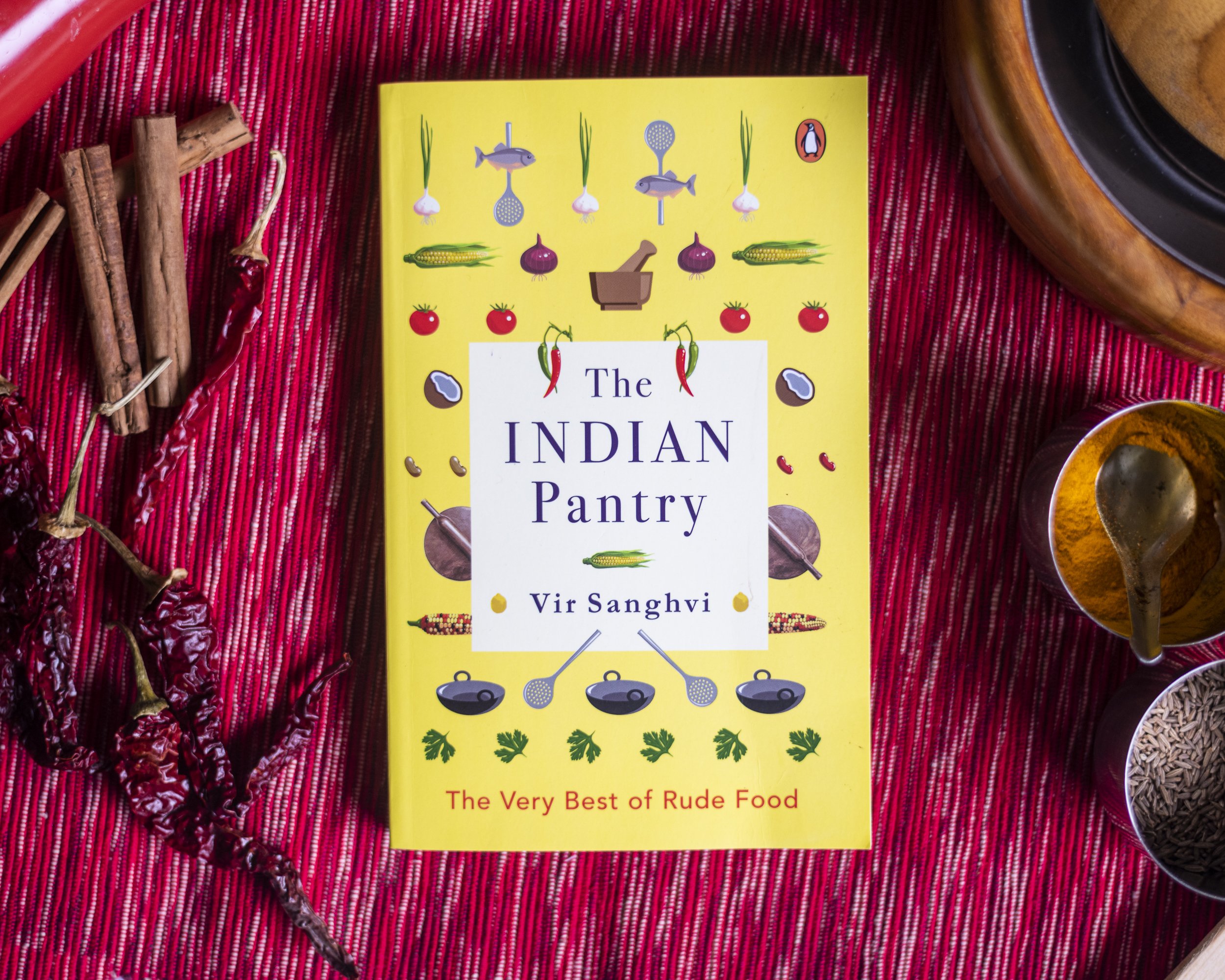
From food columnist and star journalist Vir Sanghvi comes a collection of insightful, witty and myth-busting pieces about the ingredients in our kitchens.
In his distinctive, no-holds-barred style, Sanghvi introduces the reader to not only the Indian pantry but also the culture, history and unique experiences that make Indian food so popular the world over.
Here’s a delectable excerpt for you!
————————————————————————–
So what do you do if you want to eat good sausages in India? Well, there is always the Oberoi option. Some food stores will sell imported
sausages. And if you know a good artisanal sausage maker, you will be fortunate enough to be spared the plastic torpedoes of Big Meat.
Alternatively, you can look for the delicious Goan chorise (a descendant of the Portuguese chorizo), which is always made by artisans,
and which more and more chefs seem to be sourcing. Thomas Zacharias gets it for the Bombay Canteen and O Pedro. Manu Chandra serves the
real thing at many of his restaurants (though Manu may well be making his own). So do many others. If you can get your hands on good sausages, what should you do? Well, speaking for myself, I nearly always look for something interesting to do with sausages. This is a lesson I may have learnt from an Indian-style curry made with chunks of pork sausage sourced from a local cold storage in Mumbai.
Of late, I have been experimenting with the use of sausages to flavour rice. Most Goans are familiar with the idea of a chorise pulao (though
they may call it something else) in which the white rice is streaked red from the vinegar as it escapes the sausages in the pan and in which the
fat from the chorise coats each grain of rice even as the masalas flavour the pulao.
The Goan idea comes from southern Europe where sausages have been used to flavour rice for centuries. But there is also an oriental
equivalent. It is not difficult to find slightly sweet Chinese sausages in most metropolitan Indian cities now. These sausages work better as a
condiment than on their own. I chop them into little dices and stir-fry them with rice and chopped black olives, with just a little soya. You get a
perfect fried rice with virtually no effort. If you are fortunate enough to gain access to more unusual sausages, the possibilities are endless. One of the advantages of going to Bangkok so often is that my wife and I are able to buy Thai sausages fairly regularly.
There is one sausage in particular—easily available at branches of the Tops supermarket chain—called a northern Thai sausage that we always
bring back. (This is a fresh sausage, unlike the salami-style Chiang Mai sausage that I also like.)
The northern Thai sausage is not much good on its own—it oozes liquid when you cook it—but it is terrific in a curry because it imbues the
gravy with the flavours of its stuffing: coriander seeds, makroot, lemon grass, etc. And four sausages are enough to make a brimming pot of
curry.
I have no idea whether it was because she heard me babbling about my mother’s sausage curry, but my wife makes a killer Thai curry
with these sausages. As with all improvised dishes, I am sure it is not authentically Thai, but it is truly delicious.
The only special ingredient you need is the sausage. Everything else is easily available in most large Indian cities. And after much persuasion,
I persuaded my wife to part with her recipe for the quick and easy Thai sausage curry. You should try it.
Seema’s Sausage Curry
Ingredients
Oil: 4 tablespoons
Thai sausages: 4
Thai red chillies: 3
Green onions: 1 small cup, chopped small
White onions: 1 small cup, chopped small
Garlic: 1 whole bulb, chopped small
Thai galangal: 3 tablespoons, chopped small
Lemon grass: chopped into big chunks (easy to remove later)
Kaffir lime leaves: 6
Kaffir lime: half
Coconut milk: 1 can
Green curry paste: 1 packet
Krapow paste: 1 packet
Fish sauce to taste
Basil leaves: a handful
Method
Let the oil heat in a large pan. Make a vertical cut in the chillies and fry
in oil. Add kaffir lime leaves and allow them to crisp up. Add ginger and
garlic, and sauté. Then add the green and white onions and cook until
translucent. Chop the sausages into rounds. Add them to the pan and
cook until they are browned. Then add the curry paste and krapow paste
and stir. Once the paste has coated the sausages evenly, add the coconut
milk. Let the curry boil for a couple of minutes and then reduce the heat
so that the curry simmers.
Add fish sauce and lime to taste. Garnish with fresh basil leaves,
roughly torn. Serve with sticky rice.
Vegetarians can substitute shiitake mushrooms and baby corn for
the sausages and use the same recipe, using soya sauce instead of fish
sauce. The recipe works with most artisanal sausages if you can’t get your
hands on the Thai sausage.
Get your hands on more such scrumptious recipes in The Indian Pantry









